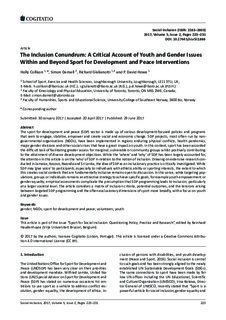| dc.description.abstract | The sport for development and peace (SDP) sector is made up of various development-focused policies and programs that seek to engage, stabilise, empower and create social and economic change. SDP projects, most often run by non-governmental organisations (NGOs), have been implemented in regions enduring physical conflicts, health pandemics, major gender divisions and other social crises that have a great impact on youth. In this context, sport has been accorded the difficult task of facilitating greater access for marginal, vulnerable or community groups whilst positively contributing to the attainment of diverse development objectives. While the ‘where’ and ‘why’ of SDP has been largely accounted for, the attention in this article is on the ‘who’ of SDP in relation to the notion of inclusion. Drawing on extensive research conducted in Jamaica, Kosovo, Rwanda and Sri Lanka, the idea of SDP as an inclusionary practice is critically investigated. While SDP may ‘give voice’ to participants, especially to individuals with athletic ability or sporting interests, the extent to which this creates social contexts that are fundamentally inclusive remains open to discussion. In this sense, while targeting populations, groups or individuals remains an attractive strategy to achieve specific goals, for example youth empowerment or gender equality, empirical assessments complicate the presumption that SDP programming leads to inclusion, particularly at a larger societal level. The article considers a matrix of inclusion criteria, potential outcomes, and the tensions arising between targeted SDP programming and the often-exclusionary dimensions of sport more broadly, with a focus on youth and gender issues. | nb_NO |

